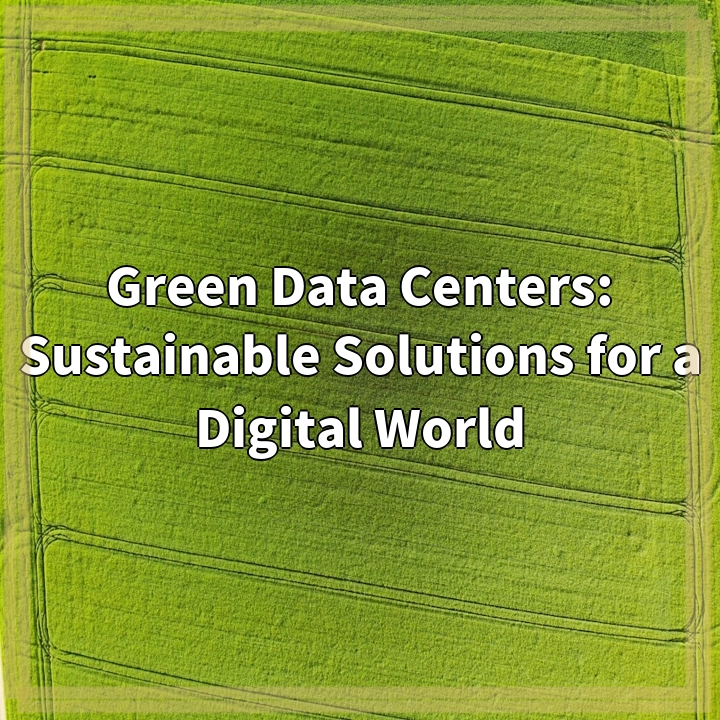
What are Green Data Centers?
A green data center is a facility designed to minimize the environmental impact of data storage and processing while maximizing energy efficiency. These centers employ sustainable practices and technologies to reduce their carbon footprint and optimize resource utilization.
Real-World Problems Associated with Green Data Centers
1. Energy Consumption:
Traditional data centers consume vast amounts of energy to power servers, cooling systems, and other infrastructure components. This high energy demand contributes to greenhouse gas emissions and strains local power grids.
2. Heat Management:
Data centers generate substantial amounts of heat through server operation. Cooling this heat-intensive environment requires substantial energy consumption. Inefficient cooling methods can lead to excessive energy usage and contribute to global warming.
3. Water Consumption:
Data centers often require significant amounts of water for cooling purposes. In regions where water scarcity is a concern, this can place additional strain on local water resources and ecosystems.
4. E-Waste Management:
As technology advances, older server and networking infrastructure becomes obsolete and is discarded as electronic waste (e-waste). Proper disposal of e-waste is crucial to prevent environmental contamination and negative health impacts.
5. Renewable Energy Integration:
One of the challenges for green data centers is the integration of renewable energy sources into their power supply. Data centers typically require a constant and reliable source of electricity, and transitioning to renewable sources can be complex and expensive.
6. Lifecycle Assessment:
Evaluating the environmental impact of data centers requires examining the entire lifecycle of the infrastructure. This includes the energy and resources used during construction, operation, and decommissioning. Conducting comprehensive lifecycle assessments can be challenging but is necessary for accurate sustainability analysis.
In conclusion, while green data centers offer sustainable solutions for an increasingly digital world, they still face real-world challenges. Addressing the energy consumption, heat management, water usage, e-waste management, renewable energy integration, and conducting lifecycle assessments will be crucial to truly optimize their environmental impact.

Solutions for Green Data Centers
1. Energy Efficiency:
Improving the energy efficiency of data centers is a key solution. This can be achieved through the use of energy-efficient hardware, virtualization technologies, and optimized cooling systems. Implementing power management strategies and adopting energy-efficient practices can significantly reduce energy consumption.
2. Renewable Energy Adoption:
Integrating renewable energy sources, such as solar or wind power, into data center operations is crucial for sustainability. Investing in on-site renewable energy systems or sourcing renewable energy from external providers can help reduce reliance on fossil fuels and decrease greenhouse gas emissions.
3. Efficient Cooling Technologies:
Exploring innovative cooling technologies, such as liquid cooling or advanced cooling architectures, can enhance heat management and reduce energy consumption. Efficient cooling systems can avoid overcooling and better regulate temperatures, resulting in substantial energy savings.
4. Water Conservation:
Data centers can implement water-saving strategies such as recycling and reusing water, optimizing cooling tower operation, and using alternative cooling methods that require less water. Adopting water-efficient practices can help alleviate pressure on local water resources and contribute to sustainability.
5. Circular Economy Practices:
Promoting the circular economy within data centers involves responsible e-waste management. Implementing recycling programs, refurbishing and reusing old equipment, and properly disposing of hazardous materials help minimize the environmental impact of e-waste.
6. Green Building Design:
Constructing data centers with energy-efficient infrastructure, sustainable materials, and green building design principles can have a significant positive impact. Incorporating natural lighting, efficient insulation, and renewable energy systems during the design phase can reduce energy consumption and environmental footprint.
7. Industry Collaboration and Standards:
Collaboration among data center operators, industry associations, and regulatory bodies can drive the development of common standards and best practices. Encouraging transparency and sharing knowledge on sustainable data center operations can accelerate the adoption of environmentally friendly solutions.
By implementing these solutions, green data centers can mitigate their environmental impact, contribute to sustainability efforts, and lead the way towards a greener digital future.















